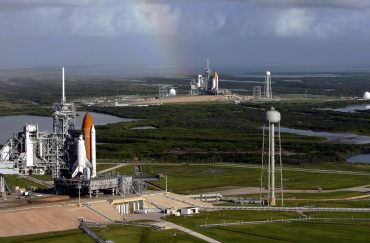

Cape Canaveral has been the most active rocket launching location in the United States for many decades. The location was chosen in 1950. Prior to that, the U.S. government was launching rockets at White Sands Missile Range in New Mexico.
A new location was needed because of the uncertainty of rocketry. They needed to launch the rockets over the ocean in case of a mishap. Launching the rockets over populated areas put human life at risk unnecessarily.
On July 24, 1950 the United States Government chose Cape Canaveral as its main launching area (NASA would be formed in 1958). The location was great in that it had a vast expanse of ocean immediately to the east. But, initially scientists were concerned about the very humid weather and violent storms which occur in the state.
Still, Cape Canaveral Florida would end up being the key launching point from 1950 onward. Weather has actually played a role in two major incidents at the Cape. First, an unusual overnight cold snap contributed to the failing of an O ring on one of Space Shuttle Challenger’s rocket boosters, causing it to explode, losing all lives on board.
One year later, lighting struck an A-67 rocket less than one minute after takeoff, causing the rocket to explode. Still, in 70 years of operation, the Cape has had an overall good record of success. Two incidents in 70 years proves that fact.
Another fantastic feature of Cape Canaveral’s location is its relation to the equator. At the equator, rockets get the best boost possible going into space. This is because the speed of the Earth rotates at 1,040 mph at this spot. The rocket launch takes advantage of the Earth’s natural speed by launching eastward from the Cape.
If you have never toured the Kennedy Space Center at Cape Canaveral, we highly recommend you do. It is an awesome experience. Tour information here
